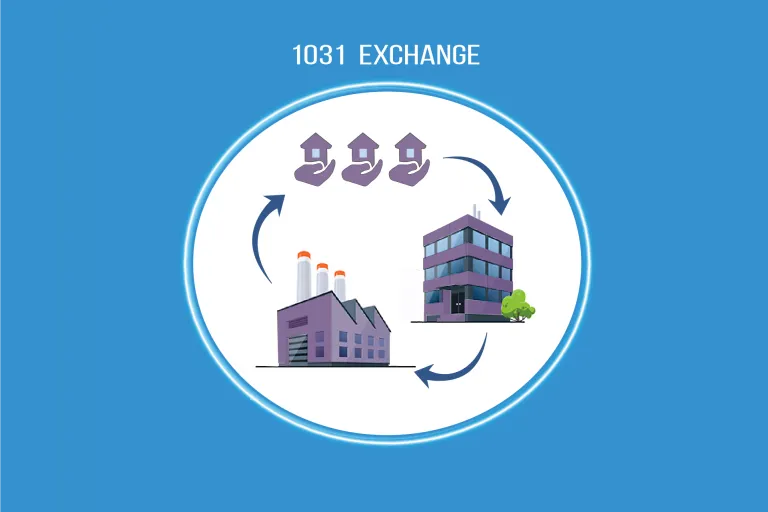The 1031 exchange (or “like-kind exchange) is one of the most powerful tax benefits of real estate investing. It allows investors to defer the capital gains tax typically due upon the sale of a property, and reinvest (or “exchange”) 100% of their pre-tax proceeds into a new investment. There, your investment dollars can grow and compound, undiluted by the tax, which gets deferred. The best part? This tax deferral of capital gains can be repeated over and over again, in consecutive investments (provided you follow IRS rules). In fact, you can continue deferring capital gains until you die, at which point your heirs will inherit the property with no capital gains taxes due. Instead, they inherit the property at a stepped-up tax basis. So they will never have to go out of pocket to pay that accumulated capital gains bill. For smart real estate investors, the 1031 strategy is an essential part of their estate planning.
In short, the 1031 exchange is a powerful wealth-building strategy when done consistently and correctly, using a reputable 1031 exchange accommodator.
1031 EXCHANGING INTO A REAL ESTATE SYNDICATION
However, due to the 1031 exchange deadlines and rules, many investors see it as risky. They don’t have the time to search, underwrite and vet scores of properties in order to identify a great one, then perform adequate due diligence, inspections, obtain financing and close within the 1031-exchange window. Others end up rushing into an inferior investment, or miss the 1031-exchange deadline altogether, then must pay the accumulated taxes due. You don’t want that.
A powerful solution can be 1031-exchanging the sale proceeds of your investment property into a professionally-managed multifamily syndication. This achieves the goal of safely deferring the capital gains taxes, can do it in less time with less stress. It can also land you in a higher caliber investment than you might find on your own. That’s because unearthing exceptional investment opportunities is ALL a syndicator does. If you choose an experienced, high-quality operator, they will have built teams, systems and relationships to help find exceptional, needle-in-a-haystack opportunities. Bonus: they also handle due diligence, loan applications closing, and execute the value-add business plan for the property, allowing you to avoid all the headaches of property management.
With an experienced syndicator, these benefits should vastly outweigh the fees, and position you for another highly-successful investment on your wealth-building journey. A non-negotiable requirement, however, should be that your operator (not to mention your 1031-exchange accommodator) is experienced in exchanges, has done them successfully, and knows and follows the rules. Otherwise, the IRS could find error, and disqualify potentially decades of tax-deferred growth (not to mention penalties).
You don’t want that.
But done correctly, 1031-exchanging into real estate syndications can be an optimal strategy for growing your investment snowball.
HERE’S HOW IT WORKS
The 1031-exchange is defined as a “like-kind exchange”, meaning you are selling one property and exchanging your investment dollars into a similar, or “like-kind” property. The ownership entity of the sold property also must be the same ownership entity that takes ownership of the new property.
Here’s where it gets a little tricky (so make sure your syndicator knows the IRS rules), and it requires preparation in advance of the sale.
Typically, syndication investors are not direct owners of the property, but rather, owners once-removed (to accommodate the preferred return waterfall). But 1031-exchange investors, in most cases were direct owners of their downleg property (the property being exchanged out of).
To accommodate 1031-exchange investors, the syndication must meet the “like-kind” requirement. This is achieved by setting up a tenants-in-common, (TIC) structure, by which the exchange investor becomes a direct (though fractional) owner of the syndication property, thereby meeting the IRS “like-kind” exchange requirement.
There are other considerations as well. Unlike standard syndications, the TIC structure, employed to accommodate 1031-exchange investors, brings some features that can be challenging in the context of a syndication. One is the TIC feature of “joint and several ownership”, and “shared control”. However, in order to execute a successful syndication, there must be a distinction between investors and management, who are responsible for executing the business plan, making critical decisions, and navigating challenges.
However, these economic and control considerations can be addressed through a side-letter, allowing the syndication to remain compliant with TIC rules, satisfy 1031-exchange requirements, and allow for a successful syndication.
Fast-forward to the successful completion of your new syndication investment: if the syndication sponsor facilitates, you can once again defer your fresh capital gain taxes by 1031-exchanging your interest into yet another syndication. Syndications as a group can 1031-exchange into a succeeding project, but the individual investors cannot exchange their personal interest into something else. Ask your syndication sponsor if they structure 1031 exchanges upon exit.
THE BOTTOM LINE
1031-exchanging into a syndication has multiple complex moving parts, requiring an experienced operator and the guidance of a professional 1031-exchange accommodator. But done correctly, can be a powerful option in your investing arsenal and smart way to snowball your wealth!
- Mark

